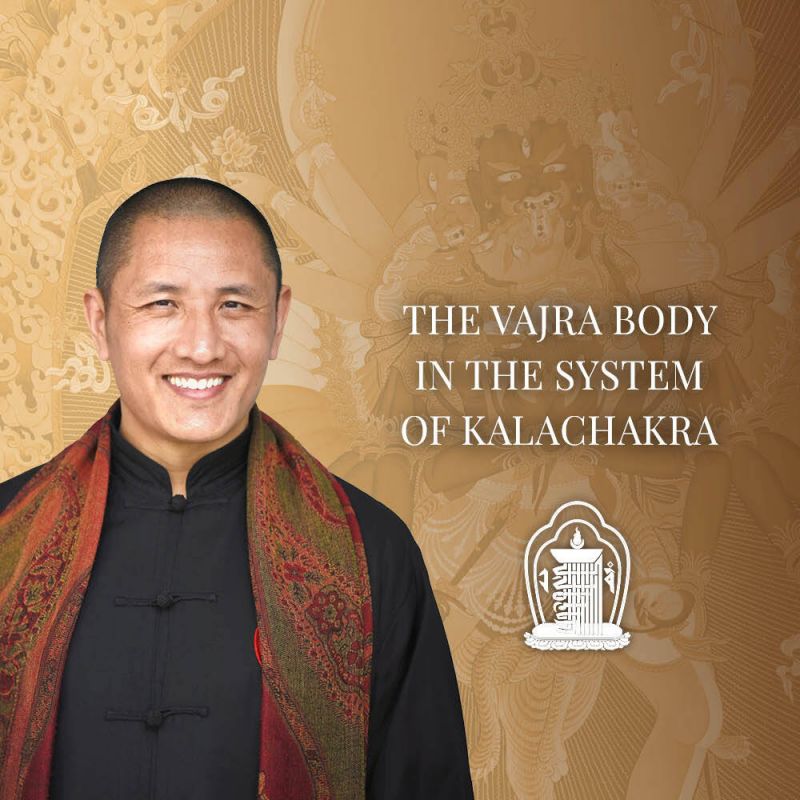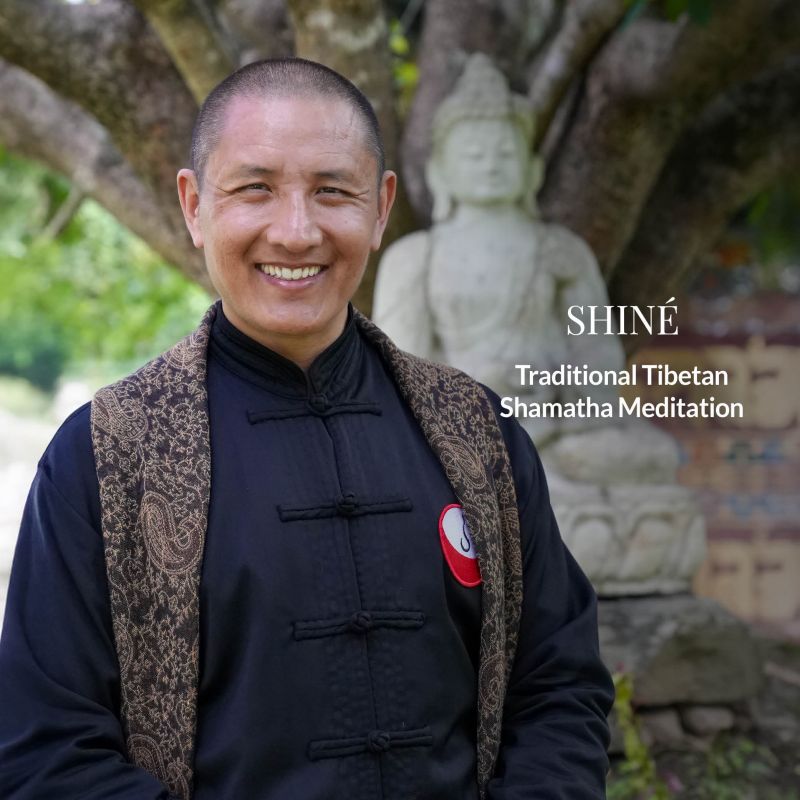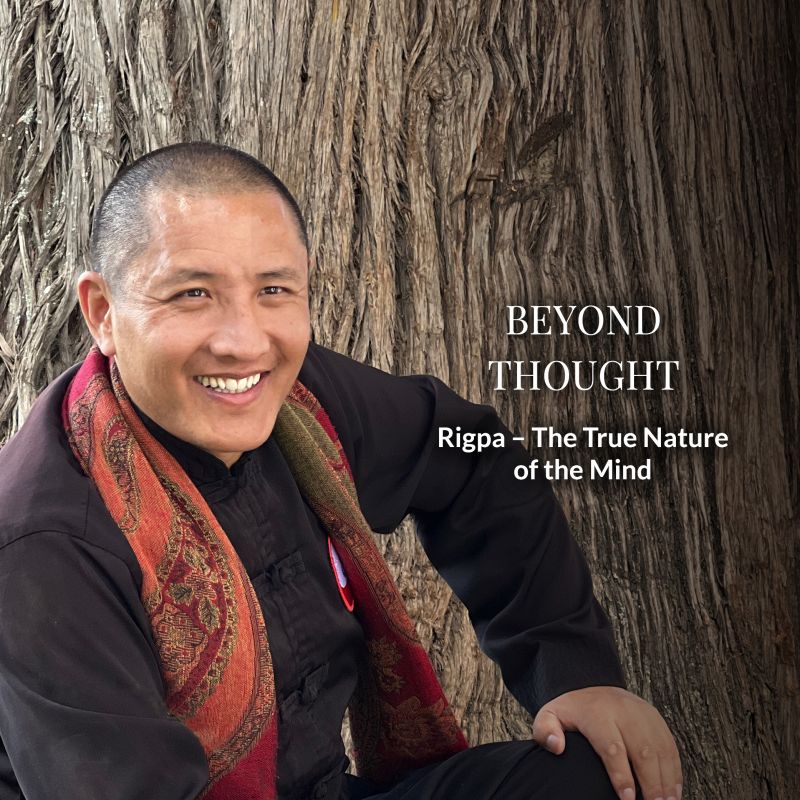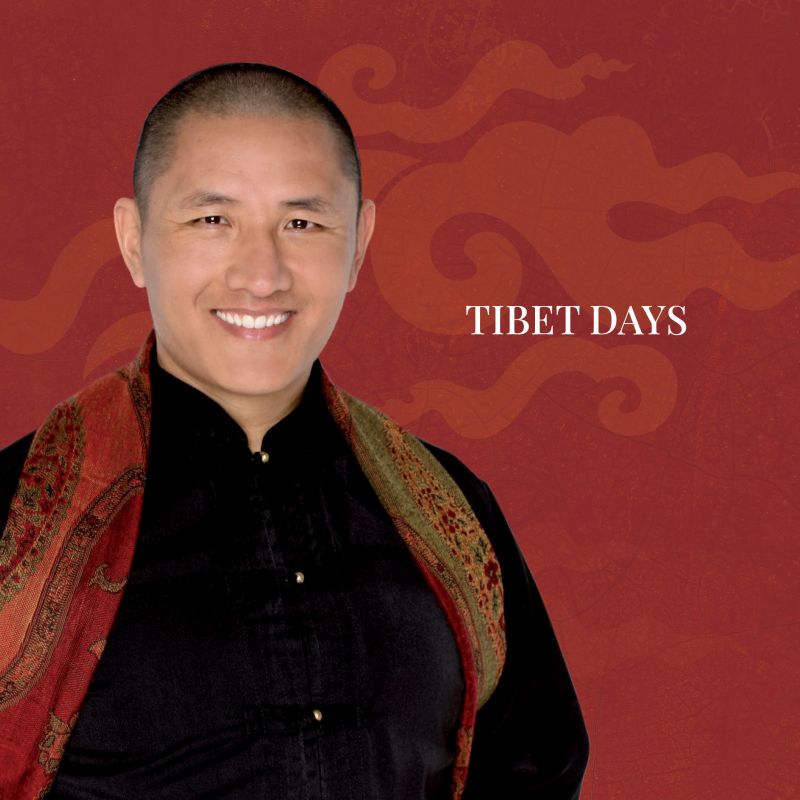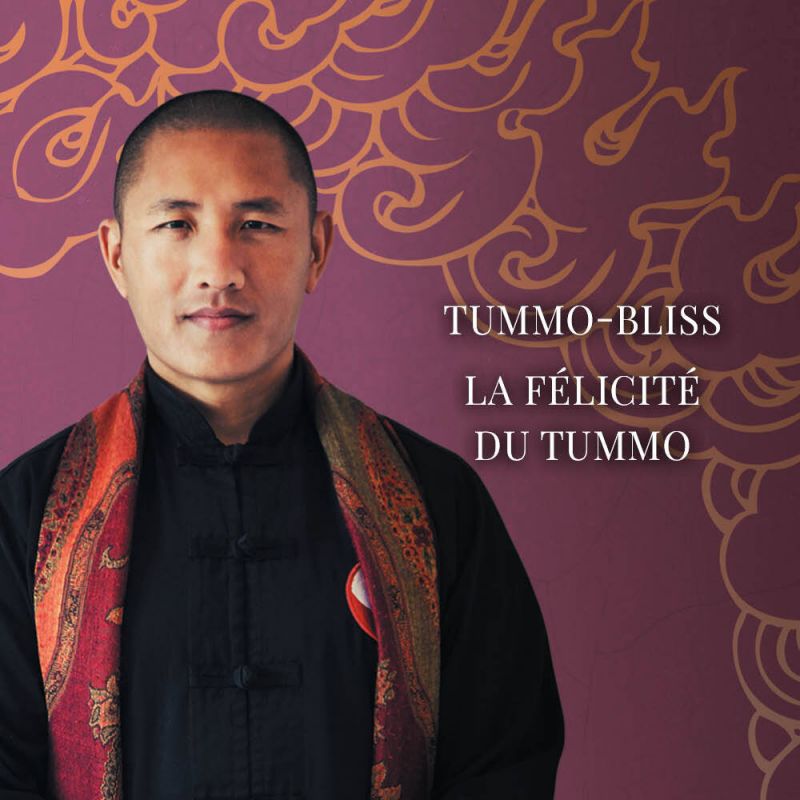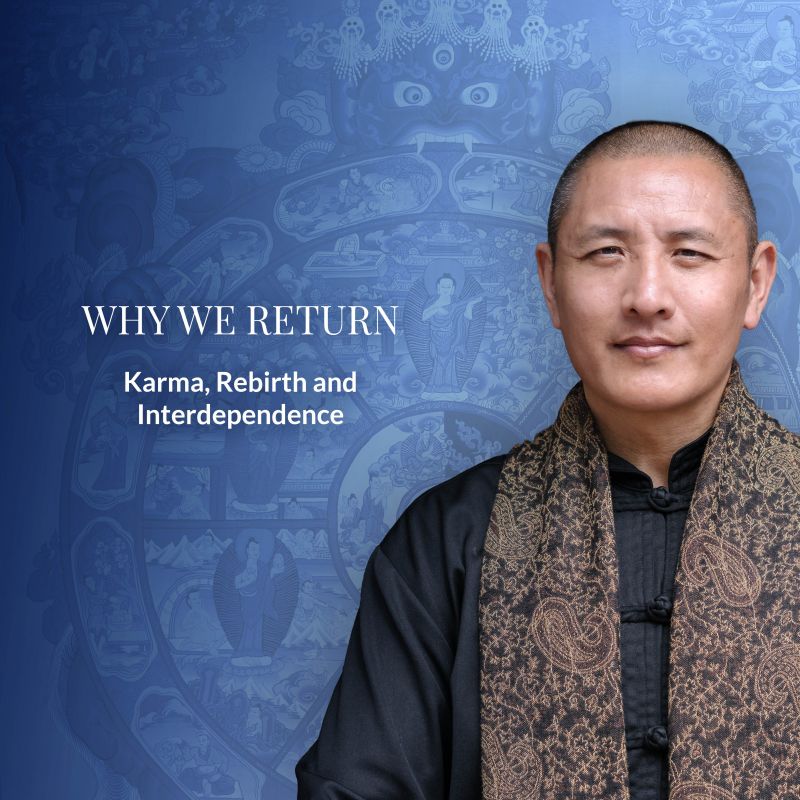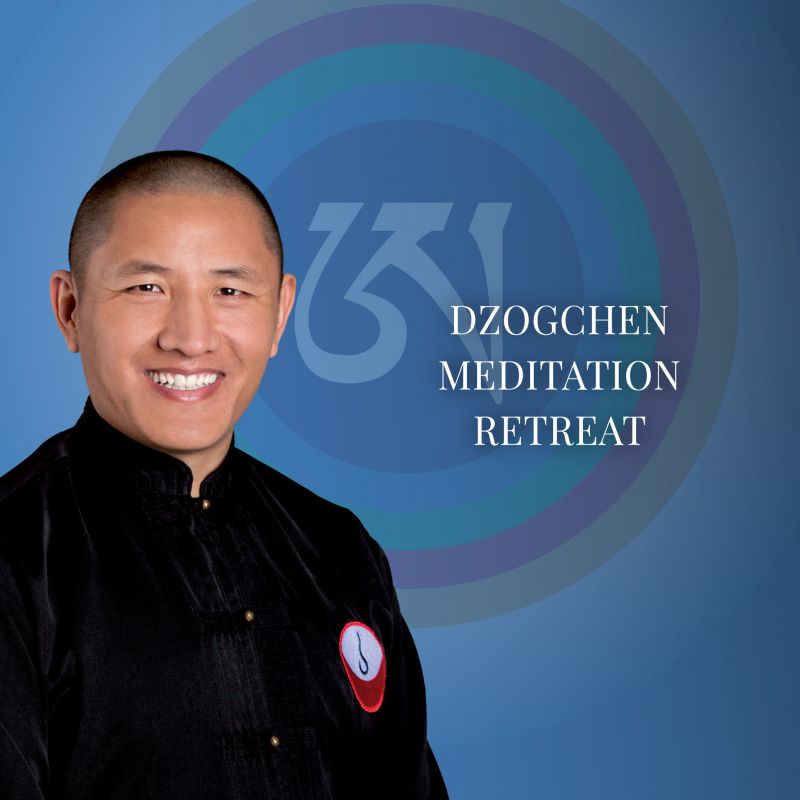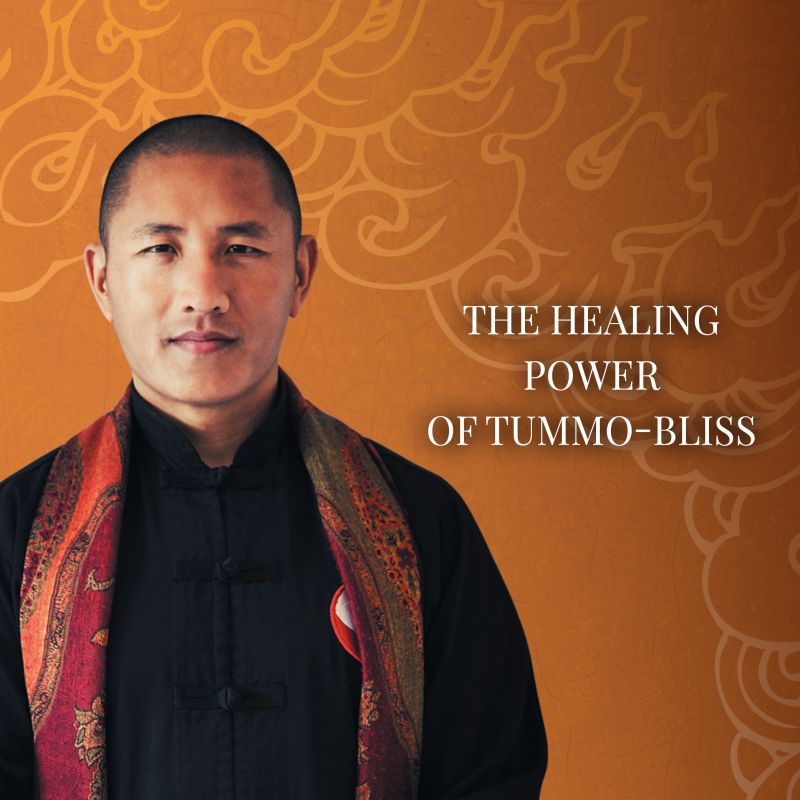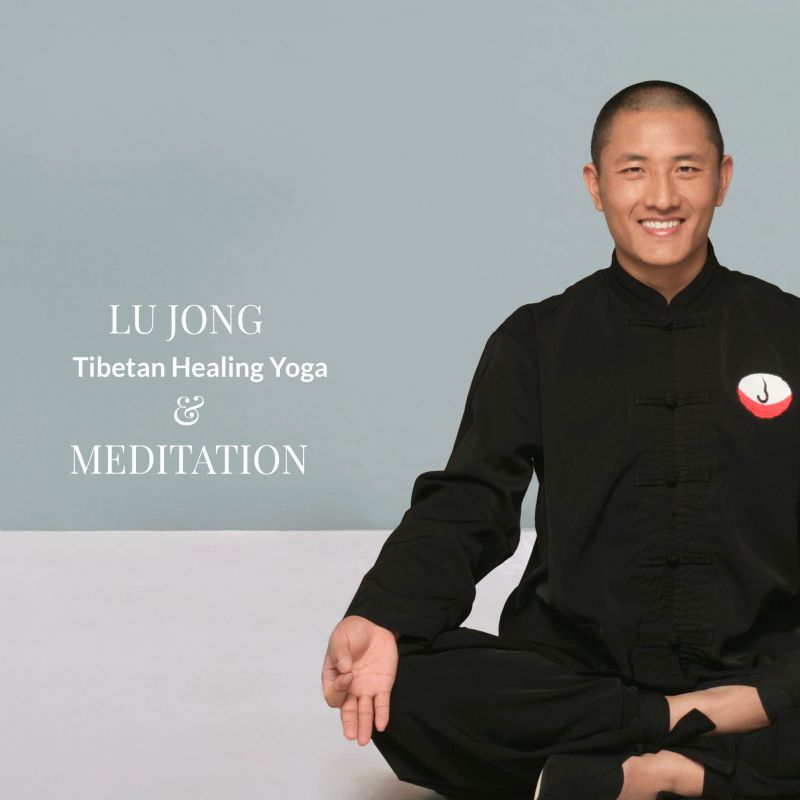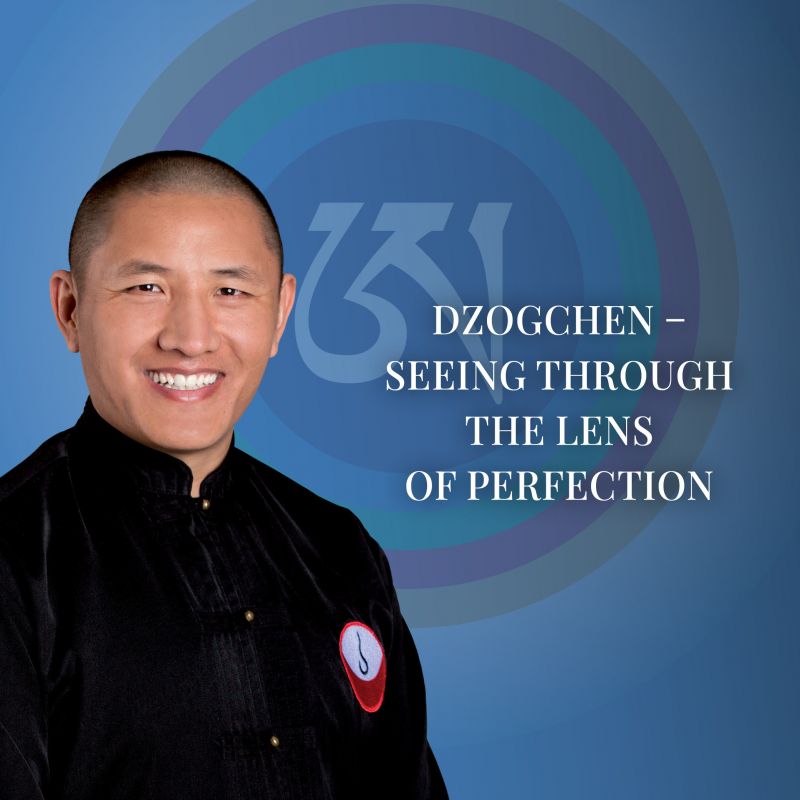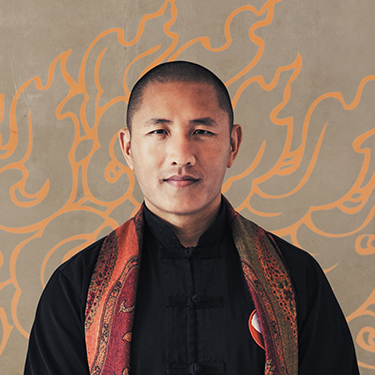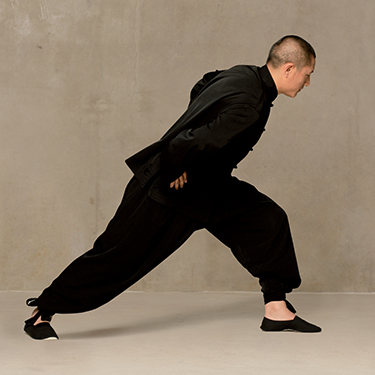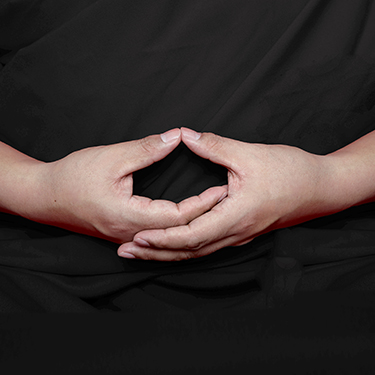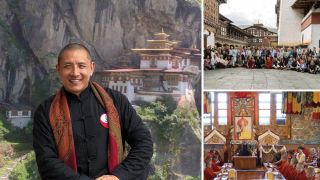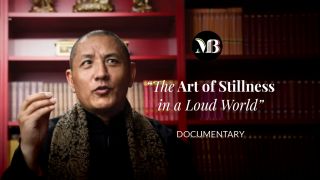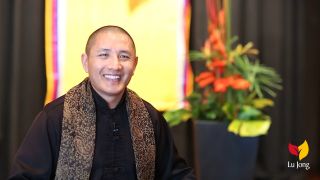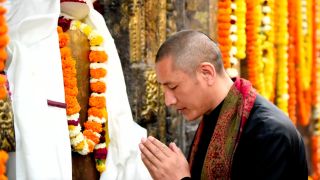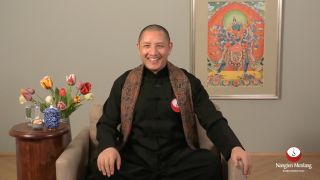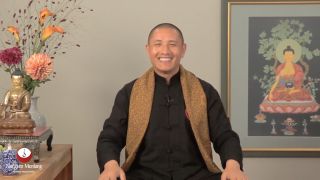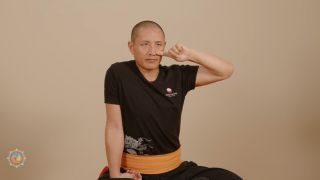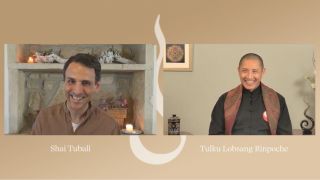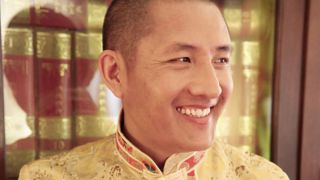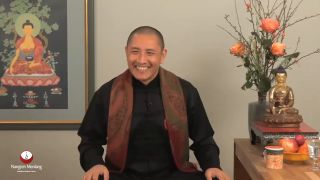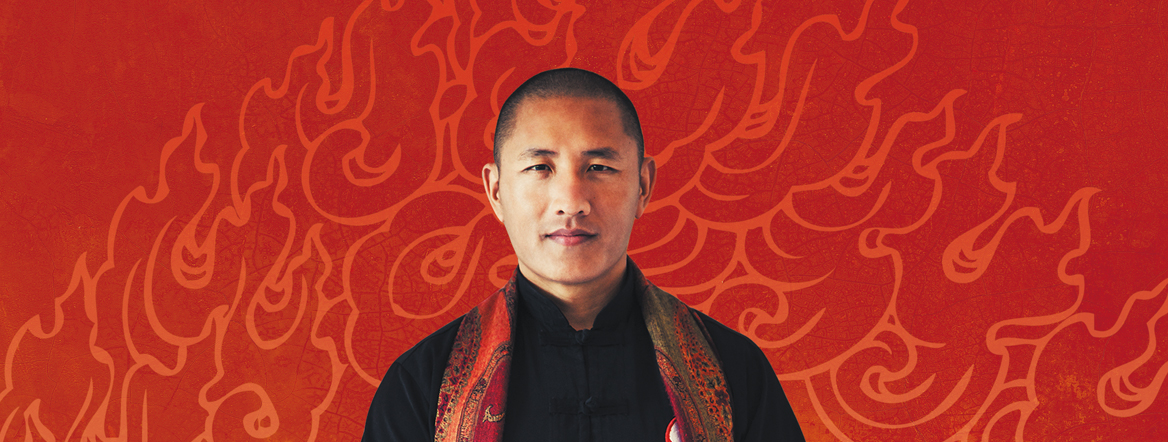
Featured Events
„The wisdom of Buddhism is emptiness
and the method of Buddhism
is compassion.“
Tulku Lobsang Rinpoche
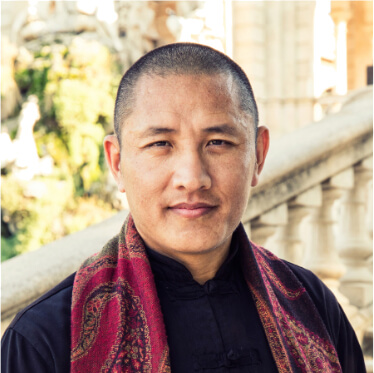
Tulku Lobsang Rinpoche
Tulku Lobsang Rinpoche is a high Buddhist master and teacher. Born in Amdo, north-eastern Tibet, Tulku-la was recognized at the age of 13 as the eighth reincarnation of the Nyentse Lama. Rinpoche bases his teachings on the ancient knowledge of Tantrayana, which is the foundation of both Tibetan Buddhism and Tibetan Medicine. Tulku-la travels through Europe, America and Asia sharing his deep knowledge of this precious wisdom.
Tulku Lobsang Rinpoche’s teachings are characterized by his kind, humorous, and warm-hearted nature. Rinpoche bridges worlds and translates the ancient wisdom of his venerable transmission lineage into practical advice for the present day. Tulku-la’s greatest wish is to reduce suffering in the world by sharing this profound treasure of wisdom. Rinpoche’s traditional background and charismatic, straightforward style make him a wonderful and wise teacher.
Videos
Tulku Lobsang Rinpoche presents Tummo on National Geographic
Rinpoche appeared on National Geographic’s TV program “The Story of God with Morgan Freeman.” In the episode “Is God Inside Us?“, Tulku Lobsang introduced Tummo - an ancient practice of Tantrayana Buddhism - and spoke about its power to connect us to the divine within ourselves, to the Buddha nature innate to all of us. As a Tummo expert, having practiced it for over 25 years and taught Tummo to countless students, Rinpoche also shares this precious knowledge in his course “Strengthen Your Self-Healing Powers with the TUMMO – Inner Fire Practice”.
Here you can view the National Geographic trailer:
„Nothing is difficult until you think it’s difficult.
Nothing is easy until you think it’s easy.“
Tibetan Knowledge
- Details
- Written by Jose Torices
- Category: Tibetan Knowledge
- Hits: 78666
Tulku Lobsang began his official monastic education at the young age of six. It began when he entered the Nangzi Bön Monastery. There, he received many foundational teachings, initiations and empowerments in this spiritual tradition of Tibet.
For many people, Tibet is the land of Buddhism. But, in fact, many Tibetans and Lamas also practice Bön, either independently or alongside Buddhism. On the surface they are Buddhist, and underneath there may be a core of Bön.
Bön was rooted long before the arrival of Buddhism. When Buddhism was introduced in Tibet, around the 7th century, Bön was at first persecuted and defamed as the new religion took hold. However, the Bonpos (as the practitioners are called) remained steadfast. Eventually, Bön not only continued to survive, but also thrived, as the practices were adapted to include those tenets of Buddhism that contributed to their worldview and furthered their aims on the path. For example, the higher form of Bön, Dzogchen, very closely resembles the Dzogchen of the Nyingma, which is the oldest of the four main school of Buddhism. Both are very high spiritual doctrines.
Bön is an ancient religion, but one still very alive and well today.
Bonpos aim to harmonize the microcosm with macrocosm. The more the individual, family and society are in alignment with the cycles and forces of nature, the less suffering and the more success there is in life. The Bonpos believe that there is divinity in all of nature—in the elements, as well as in each of us. Therefore, it is important to develop positive relationships between the individual and the various aspects of nature. In this way, the spirits and forces of nature can help us by removing obstacles and supporting us on our path of self-awareness.
Bön also teaches us about our innate healing energies and how we can enliven and balance ourselves. There are many meditation and movement techniques that deepen our awareness and sensitivity to subtle aspects of our being. We learn to connect with the five elements, which are the fundamental energetic qualities of our inner and outer nature.
Dzogchen, one of the highest teachings, is also part of the Bön tradition. The goal of Dzogchen, or The Great Perfection, is to enter the natural state of mind, which is pure light and wisdom. There is nothing to try, nothing to accept or reject, and nothing to transform. It is a self-perfected state in itself, and it is accessible to us because it is our nature.
Tulku Lobsang weaves together the wisdom of all lineages of Tibetan Buddhism and Bön. They all teach us about the true nature of our existence. The essence of the teachings remains the same—at the heart of our nature is pure, clear light and wisdom, and there are many methods to enable us to fully realize this.
- Details
- Written by Jose Torices
- Category: Tibetan Knowledge
- Hits: 95961
The Three Vehicles of Buddhism
Tantrayana is one of the three main paths, or vehicles (yana), of Buddhism. On the Tantrayana path we use the body to work with the mind.
What are the three paths? One path is renunciation, which is Theravada Buddhism. Theravada Buddhism focuses on the teaching of the Four Noble Truths and the Eightfold path, as well as meditation instruction. It is known for its vows and cultivating discipline. This path teaches how to not harm others.
Another path is recognition or realization, which is Mahayana Buddhism. Mahayana is known for its higher understanding of emptiness and compassion. This path teaches how to help others; then you automatically don’t harm others.
The third path is transformation, which is Tantrayana. This path teaches us how to be happy ourselves; then we automatically help others. Tantrayana is also called Vajrayana, the Diamond Vehicle. The reason is that through its practices we transform our body, speech and mind to be like a diamond—strong, clear and indestructible.
Not to Renounce—Transform
On this path we do not renounce anything because everything around us and everything within us can be used as a tool of transformation. For example, Tantrayana practitioners don’t reject problems. Instead, we see problems as our best teachers. Life is full of problems; we can never escape problems! Why try to push them away? We should thank our problems and the people that cause us problems, as this is the best way to learn about ourselves. It is the best opportunity to develop. The same is true for our own negative emotions. Rather than rejecting or renouncing our negative emotions, we can use them. We can use a greater anger to come out of anger. In this way, we transform negative emotions into wisdom.
Tantrayana teaches us that we need to expand our desire. Desire is a powerful tool on the path to enlightenment. We do not renounce desire. We need to expand it to include all things, including problems, negative emotions and difficult people. This is the way to become happier and healthier, to reduce stress and fighting, and to eventually come out of desire.
Interconnected Body and Mind
Tantrayana has a deep understanding of the different dimensions of the body and mind. Because of their interconnectedness, we can use the body as a vehicle to work with the mind and develop on the spiritual path. For example, when there are blockages in the subtle body channels, this causes our mind to also become stuck and tight. Then our mind does not flow and our ignorance obscures our true nature. Therefore, by doing practices that release blockages in the subtle body channels and harmonize the flow of vital winds and essences within the channels, our mind will also become more pure and more balanced. We will be better able to access our innate wisdom and will come closer to our true nature, which is clearness, openness and light. So Tantrayana includes very special techniques that empower us to experience our Buddha-nature in a very direct way.
Three Things We Need
Tantrayana is indeed a very direct path. One needs to be brave to be on this path. Faith makes us brave. We need three things when we practice Tantrayana: faith in the teaching, faith in the teacher and faith in ourselves. If we don’t have faith in the teaching and that it works, then we will have no motivation to continue if our practice becomes challenging. We need to have faith that if we do the practice correctly, we will achieve results.
Next we need faith in the teacher. Whenever you practice Tantrayana, it is very important that you have a master, a guru. Why do you need a master? The master is a representation of Buddha. Our minds are so deluded that we have no chance to receive Buddha’s direct teachings. We are in a different dimension. It is the master that allows us to receive all the blessings of the past. To practice with a master means that not only you receive teachings, but that you connect. This means you also practice devotion. Devotion is the way to reduce your ego-pride. If you practice the teachings with ego-pride, then the teachings can become poison. They will go the complete wrong way. Therefore, we need to cultivate devotion. This enables us to receive the teachings in the right way. For this reason we say that Guru Yoga is the spine of Tantrayana. (See Guru Yoga for more information.)
Finally, we need faith in ourselves. We need to know and accept that we are pure Buddha-nature and that we all have the potential to reach there. It is our own motivation, discipline and energy that will take us there. For sure, the teachings function. If you have a good teacher, then you are already very fortunate. Then, it is only up to you to achieve the result.
Nature, Not Culture
In conclusion, Tantrayana is nature, not culture. Tantrayana is beyond the conceptual mind, beyond thought. Tantrayana is methods that work with the fundamental nature of our body and mind. We all have this nature, no matter where we are from. This is pure nature.
Tulku Lobsang teaches accessible methods to use the principles of Tantrayana for our own development. He teaches us how to release our blockages and open ourselves on an increasingly subtle level. As the subtle body changes, we completely change ourselves, and in this way, we change all.
- Details
- Written by Harald Leithner
- Category: Tibetan Knowledge
- Hits: 124453
Tibetan Astrology is an important part of Tibetan culture. It is interwoven into daily life and provides guidance for major decisions. It is also the complement to Tibetan Medicine; astrology provides the wisdom, while medicine provides the method. Tibetans have used astrology for thousands of years as a tool to better understand both themselves—including their health and fortune—as well as external factors in their lives.
Tibetan Astrology functions on the principle of interdependent logic. Nothing in this universe functions independently. We exist 100% in interdependence. This means that things are not random. From one thing, it is possible to discover everything.
Generally, the basis of Tibetan Astrology is the five elements. All of the elements conclude in time and move in predictable ways. Time is like the sixth element. So, if you know the basics of time, then it is possible to catch the elements. Through the use of time, it is possible to discover when and where something will happen, what time it will occur and what elements are involved. We completely depend on the elements. We don’t have control over them ourselves. However the elements move, we move. Therefore, if we know when the elements will be a certain way, we also know how we will be at that time.
Tibetan Astrology is very much in connection with Tibetan Buddhism. Traditionally, almost all practicing astrologers in Tibet were monks. For correct understanding, deep insight into Buddhist psychology is needed. Tibetan Astrology is as much a result of mental training, such as meditation, developing fine awareness and intuition, as the result of skillful astrological calculations. It is a practice of compassion.
The shifting of the elements according to the astrological cycles affects our bodies and the functioning of the organs. A good doctor needs to understand this, especially when doing a pulse diagnosis. Otherwise, since the person’s pulse changes according to seasonal changes, this could result in a misdiagnosis.
Tibetan Astrology teaches us that we are part of universal cycles. We may think we act independently, but this is only illusion and ignorance. We are completely dependent on these cycles and affected by them—mentally, physically and energetically. It is wise to understand this and harmonize ourselves with these changes. This will help us to be happy and healthy.
- Details
- Written by Harald Leithner
- Category: Tibetan Knowledge
- Hits: 123499
Tibetan Medicine is a holistic system that honors the deep interconnectedness between the body, mind and external environment. Each of these areas must be addressed to live a harmonious, healthy life.
Tibetan Medicine was first taught by the historical Buddha—Buddha Shakyamuni—around 2500 years ago in the third turning of the Dharma Wheel. It is one of the world’s oldest medical systems, and yet its principles remain as true and relevant today as ever. In fact, Tibetan Medicine has a great deal to offer us in the modern world with its understanding of emotions and how they affect our body systems in very real ways.
Outer, Inner and Secret Elements
We will explain briefly here how it is that the body, mind and environment are so deeply interwoven. First, we need to know a bit about the elements. The Tibetan view is that all phenomena in existence are composed of the five elements of space, wind, fire, water and earth. The external environment is composed of them, as well as our bodies and the qualities of our mind. The elements are particular energetic qualities that, in their denser states, also take on their familiar forms. Wind has the quality of movement. Fire has the quality of heat and transformation. Water has the quality of fluidity and cohesion. Earth has the quality of solidity and stability. And space is the balance of the other four elements. It is responsible for creating separation—space—between things.
The outer elements are our external environment. This is the soil, rivers, winds, etc., that we are familiar with, as well as the atmosphere. The air that we breathe contains the five elements, and their balance shifts in a 24-hour cycle, which in turn affects the quality of our breath.
The inner elements are the composition of our bodies. Basically, earth element is our muscles and bones. Water element is the liquids in our bodies. Fire element is our inner temperature, our metabolism and the catalyst for chemical reactions. Wind element is the breath, the firing of neurons and the flow of thoughts. And space is what keeps everything in its proper place, enables the openness between the cells, as well as the hollowness of the intestines, and so on. In Tibetan Medicine, the composition of the body is further described as the seven constituents. These are: nutriment, blood, flesh, fat, bone, marrow and essence.
The secret elements are the characteristics of our mind. There are 80 different emotions, but for the sake of simplicity, we can say that negative emotions conclude in these five: ego-pride, attachment, anger, jealousy and ignorance. It is an impure state of the five elements, earth, water, fire, wind and space, respectively, that cause these emotions. When the elements are purified and balanced, these emotions become more pure and manifest as devotion and calmness, altruism and selflessness, patience and compassion, appreciation and love, and generosity and equanimity.
The Three Humors
Tibetan Medicine deals much more directly with the so-called three humors—bile (tripa), wind (lung) and phlegm (beken). These are the vital substances of the body and, collectively, they are responsible for all bodily functions. The three humors seamlessly weave together the gross, physical level of the body and the subtle, mental level.
The humors, like all things, are composed of the elements. Bile is the fire element, wind is the wind element and phlegm is the earth and water elements. There are five types of each humor, each with a specific location and function. When these humors become out of balance in relation to each other, being deficient or excessive, disease begins to occur.
The three humors are what enable our bodies to function, but since they can so easily become imbalanced, they also carry the seed of disease within our bodies. For this reason, in Tibetan Medicine, we say that we all have unmanifested disease within us. As soon as the cause and condition are there, disease will manifest.
The three humors are also linked to the three mental poisons. When bile is out of balance it causes anger. When wind is out of balance it causes attachment. When phlegm is out of it causes ignorance, or delusion. For this reason, imbalances in the mind and emotions directly cause imbalances in the body systems. Negative emotions cause disease.
Therefore, healing the body also means healing the mind. If someone is always angry, no matter what we do to treat the liver, if the anger is not treated, the liver will continue to suffer.
This is why in Tibetan Medicine we say that whatever is beneficial is medicine, and whatever causes suffering is disease. The health of the body depends on the mind, so it is important that we take care of our happiness. When we are ignorant, we continue to cause problems for ourselves and others. We perpetuate the cycle of suffering and we become sick. We need wisdom. Wisdom tells us how to care for our bodies and minds. The ultimate wisdom is love.
Of course, there is much more to Tibetan Medicine. The primary texts on Tibetan Medicine are called “The Four Tantras.” These are the Root Tantra, Explanatory Tantra, Oral Transmission Tantra and the Last Tantra. They go into great detail about the functioning of the body, the diagnosis of disease through the pulse and urinalysis, the treatment of disease through herbal medicines and specific modalities such as moxibustion and cupping.
- Details
- Written by Harald Leithner
- Category: Tibetan Knowledge
- Hits: 182124
Buddhism is a method for coming to know our deep, inner nature, which is wisdom. With this kind of wisdom, we can achieve unchangeable happiness. This means that we can use wisdom to liberate from suffering, since changeable happiness is the root of suffering.
In this world, nothing continues. Everything ends; everything changes. From the perspective of our conceptual mind, everything is always ceasing and arising. This kind of existence is not safe, not absolute. We need to understand the nature of truth to understand this existence. Therefore, it is fundamental to the Buddhist approach to understand that there are two levels of truth: conventional truth and absolute truth.
When we practice Buddhism, we practice wisdom and method. The method is compassion. This is the path of Buddhism. Compassion is not emotion; it is logic. We are the ones that benefit from cultivating compassion. Compassion and love open us and lead us to greater understanding, realizations and wisdom. Love is the universal wisdom.
Finally, the achievement of Buddhism is a perfect body and perfect mind—perfect existence. It is ignorance that keeps us from a perfect existence. We are ignorant of our true nature and the true nature of all phenomena. We are ignorant of emptiness and our infinite potential. We are ignorant of the fact that nothing stays the same, that one day we will lose everything, even our happiness. And so, we become attached to our happiness. And when the day comes that we lose our happiness, we become angry. Why do we become angry? Because of the pain of losing. And then, because of anger we are ignorant. And the cycle repeats. This is the endless cycle of samsara—repeat, repeat, repeat. Ignorance causes attachment, attachment causes anger, anger causes ignorance. Then there is pain and suffering. Only love and compassion can give us the wisdom to see, to wake up.
Love is the golden key that liberates us. Love is freedom. With love, change is never a problem. With love, change is only possibility and potential.
Buddhism includes 84,000 different methods. There is a method for everyone, no matter where you are now or your kind of psychology. These methods fall into three baskets: discipline, mindfulness and alertness mind. Discipline means vow. It means renouncing that which does not help us. Mindfulness means meditation. It means developing focus, awareness and calmness. Alertness mind means wisdom. It means leaving everything how it is with no judgment, just stillness and pure, direct perception. All methods lead us to a deeper understanding of our own nature.
One can practice Buddhism in any moment because there are many ways to practice. You can practice through meditation, like Tummo or mindfulness meditation. If you don’t want to meditate, then practice with bliss or union practice with yab yum. If you like movement, practice with Tsa Lung. If you like sleeping, then practice with sleep yoga and dream yoga. And if you don’t like to practice, then you can use the moment of death.
It is like we are sick and Buddhism makes us healthy. Buddha, the teacher, is the doctor that guides us. Dharma, the Buddhist teachings, is the medicine that heals us. And the Sangha, the community of fellow practitioners, is the nurse that helps us. But we are the patient and we have to take responsibility for our own wellness. We may be told what to do, but we must do it. It is up to us whether or not we use the medicine.
Being healthy and happy yourself is the best way to help others. May all beings be happy.

